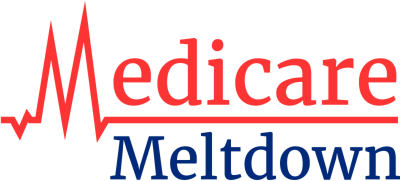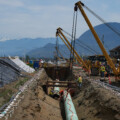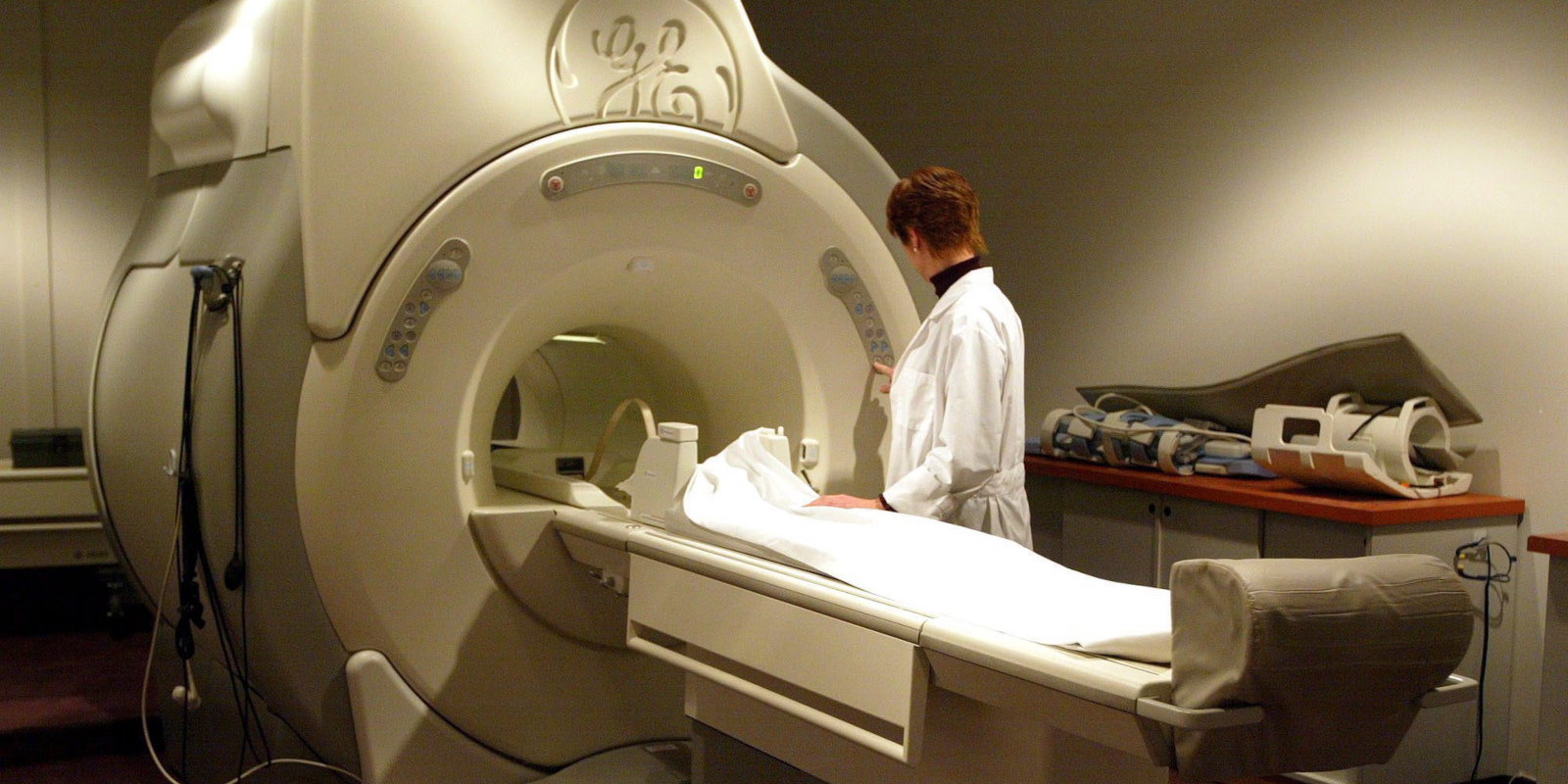Canada’s health-care system is under siege. The country is still grappling with an acute crisis in our hospitals stemming from the COVID-19 pandemic while the slow-moving quagmire caused by the country’s aging population threatens to become a larger disaster. Can our system handle it? This joint five-part Medicare Meltdown series produced by the National Post and The Hub looks deep into the world of Canadian health care, not just to identify problems, but to offer solutions for the future.

As Ontario reached the two-year mark of the pandemic earlier this year, it secured another grim milestone: the province’s surgical backlog had pushed past a million procedures.
And it wasn’t just surgeries. The Ontario Medical Association said there was another backlog of health-care services, including cancer screenings, MRIs, and CT scans, that was now more than 20 million entries long.
It gets even worse. A research paper published earlier this year by Ontario 360 also warned of an “invisible waitlist” of people who had canceled appointments or not bothered to make them, because they assumed the health-care system was too busy for them during the pandemic. This invisible waitlist could be a timebomb, as diagnoses happen later and preventative treatment goes undelivered, creating serious health problems for Ontarians later in life.
These are the long-term consequences of the headlines Canadians are reading about the acute crises at hospitals and staffing shortages at medical facilities. Everything that isn’t urgent gets delayed and the system gets increasingly backed up. Some Ontarians have been in line for more than two years and, even now, have little prospect of seeing an operating room any time soon.
In fact, the Ontario 360 paper warned that “without a proportionate plan,” the surgical backlog may never fully be cleared.
In response, the Ontario government has spent nearly a billion dollars battling the backlog. The government hopes to push through more than 200,000 surgeries and procedures in 2022-23 with incentives to hospitals, and Ontario is training surgical staff to better manage waitlists and prioritize the most urgent cases.
And while the government has proposed a suite of policy ideas, the one that gathered the most headlines was the plan to increase publicly covered surgeries performed at private clinics that are covered by OHIP, more conventionally known as “private delivery.”
Predictably, the plan has set off alarm bells for proponents of Canada’s public health-system system and Canadians who worry about an American-style system being imported into their own country.
Proponents of private delivery are at pains to point out that this is perfectly acceptable under the Canada Health Act. But are Canadians ready for more health care being provided by private clinics?
Be public about private delivery
When the Ontario government rolled out its updated strategy in August, the name told a story. It was dubbed the “Plan to Stay Open,” which won’t win any public policy awards for vaulting ambition.
With the entire health-care system in crisis, though, it was a reasonable objective and political leaders were openly admitting that things were “broken.”
“We can’t do the same status quo, the status quo has been broken,” Ontario Premier Doug Ford said in the Ontario legislature in August. “We’re going to deliver health care in a different fashion.”
The government hasn’t been eager to talk about private delivery since then, but some proponents think there’s no reason to make this policy a temporary thing.
“Every other developed country in the world has private clinics as a major part of their health system. And so as provinces struggle with the financial costs and the wait times for health care, private clinics are an option, for sure,” said Janice MacKinnon, who was a cabinet minister in Saskatchewan for a decade and has written extensively about the province’s experience with private delivery
MacKinnon said, from her experience, the key to communicating a policy like this is being open and transparent with the public, rather than shying away from a potential political controversy. The provinces should clearly show the details of the contracts they have negotiated and what they expect the companies to deliver.
“What you should be concerned about is the nature of the contract. Is it a good contract? Are you getting what you need at a good price with good quality services?” said MacKinnon.
When Saskatchewan launched its surgical initiative in 2010, it was accompanied by a goal to reduce wait times by 2014 and MacKinnon credits former premier Brad Wall’s ability to stay single-mindedly focused on that goal for its success.
And while the political landscape is stacked up against any government increasing private clinics, MacKinnon said the experience of visiting these clinics is the best argument in their favour. Especially in the latter stages of a pandemic, when people are keen to avoid hospitals, a quiet clinic with lots of parking spaces out front is particularly appealing.
“In Saskatchewan when they brought in private clinics, I knew people who were appalled, but then some of them had procedures done in the clinics,” said MacKinnon. “And they said, well, actually, this isn’t too bad at all.”
And with pandemic burnout causing staffing shortages and early retirements among nurses, private clinics could be a tempting option for nurses looking to stay in the workforce, but with less stress.
“Imagine if you said to a nurse we can give you a job with a really good salary, nine to five, Monday to Friday? That is very attractive after years and years of shifts and nights and being called in for overtime,” said MacKinnon.
How did it come to this?
Ontario can rest easy knowing that it won’t be taking this leap alone. The situation across Canada has grown so dire that even progressive governments are willing to put their Medicare bonafides at risk with experiments in private delivery.
It took a truly dire situation to make it a reality. Canadians are now waiting longer for important surgeries, missing crucial diagnostic and health assessments, and arriving at hospitals sicker and more progressed in their diseases.
Backlogs have always been a problem in Canadian health care, but when it comes to the pandemic-induced backlog, a recent report from the Canadian Institute for Health Information tells a sobering story.
According to CIHI’s research, about 600,000 fewer surgeries were performed across Canada in the first 22 months of the pandemic compared with pre-pandemic surgeries in 2019. Joint replacements and cataract surgeries accounted for around a quarter of the total reduction in surgeries.

But no one really knows how bad the backlog currently is for the country as a whole. The OMA says it will “take months, if not years, to clear the backlog of knee replacements, cataract surgeries, hip replacements, cardiac surgeries, MRIs, and CT scans.”
What are the costs of a backlog?
The phrase “backlog” gives the impression of an orderly, but slightly grumpy, queue of people waiting quietly for surgery. But the human suffering involved in delaying these procedures is undeniable.
There are real costs when people are unable to get a needed hip or knee replacement, cataract surgery, radiation therapy, cancer surgery, and MRI or CT scans.
“Wait times can, and do, have serious consequences such as increased pain, suffering, and mental anguish. In certain instances, they can also result in poorer medical outcomes—transforming potentially reversible illnesses or injuries into chronic, irreversible conditions, or even permanent disabilities,” say health policy analysts Bacchus Barua and Mackenzie Moir.
“The effects of backlogs in procedures and treatments have a profound impact on patients and on the health care system at large. The repercussions will be felt for years to come, and it is important to devise a plan now to keep patients’ conditions from worsening,” says the Canadian Medical Association.
University of Windsor professor Lloyd Brown-John argues that the backlogs are especially problematic for Canada’s elderly. Delays of essential surgeries hurt older Canadians more since they tend to be frailer than the young and less resilient.
The backlog data that is spooking Canada’s provincial governments may not even tell the whole story. The Quebec government, for instance, has reported a 24 percent drop in requests to be placed on a surgical waitlist during the pandemic compared to a non-pandemic year.
How bad is the problem?
Consider that, in 2019, the year before the pandemic, the Fraser Institute estimated the median wait time for medically necessary treatment in Canada at 20.9 weeks. This meant Canadians had to wait nearly five months to receive treatment from their initial referral by a general practitioner. And the pandemic made wait times even worse. In 2021, the median wait time in Canada reached 25.6 weeks—the longest wait time ever recorded by the Fraser Institute’s survey (in 1993, the median wait time was just 9.3 weeks, or just over two months). Today, an estimated 1.4 million Canadians are waiting nearly six months, on average, for medically necessary treatment.
In addition to the serious health impacts of wait times, there are economic costs too, as ailing patients forgo wages while they wait for treatment. According to the Fraser Institute, “wait times cost Canadians an estimated $4.1 billion in lost wages and productivity—or $2,848 per queued patient.” This is their conservative estimate; the higher cost is $12.4 billion or $8,706 per patient.
The health and economic costs of waiting for treatment have prompted Canadians to find alternative solutions, with many seeking treatments in other countries. Consider the story of one patient who, after experiencing significant wait times for a hip replacement procedure, spent $16,000 (including airfare) to get treatment at a clinic in Lithuania. Not all Canadians can afford to engage in so-called “medical tourism” but the fact that many pursue this option is a testament to a system that is unable to meet the demands of its own people.
And it’s no wonder why Canada’s health-care system can’t meet the demands when one looks at the available data on hospital beds and diagnostic technologies. At just 2.52 hospital beds per 1,000 inhabitants, Canada ranks 32nd out of 41 countries according to the latest data from the Organisation for Economic Co-operation and Development (OECD). Japan, the country with the most beds per population (12.84), has five times the number of beds per person as Canada.
Canada isn’t doing much better on the rankings for the availability of key health-care equipment. Canada ranks 30th out of 34 countries on the number of CT scanners per inhabitant, 26th on the number of MRI units per inhabitant, and 27th on the amount of radiotherapy equipment (i.e. X-rays) per inhabitant.
Ontario has multiple case studies to choose from
As the province looks to tackle its surgical backlog, it won’t be short on inspiration from neighbours.
Various provinces—including British Columbia, Alberta, Saskatchewan, and Quebec—have pursued a number of strategies to address their own backlogs. Some of their ideas include extending operating room hours at public hospitals into evenings and weekends, enabling additional hours for MRI and CT scanning, centralizing surgical waitlist management to improve administration and reduce wait times, and seeking innovative solutions for local challenges.
But perhaps most significantly, these provinces have experimented with using private resources to provide “surge capacity” in the health-care system.
Remarkably, the provincial experimentation with private delivery options to augment the public health-care system spans the political spectrum. In the case of B.C., an NDP government surprised some Medicare proponents by partnering with the private sector, which is viewed in some quarters as anathema to the public health-care model.
The pre-pandemic Saskatchewan model
Unlike the experimentation in other provinces, Saskatchewan took major steps well before the pandemic hit and made effective use of the private sector to reduce its surgical backlogs. Starting in 2010, the province introduced the Saskatchewan Surgical Initiative, which leveraged capacity at private clinics performing cataract, ACL repair, and certain gynecological procedures with the goal of reducing surgical wait times to no more than three months within four years (by 2014). According to MacKinnon, several key principles animated the government’s efforts including leadership on setting a specific target to reduce wait times, engagement of front-line staff to embrace change, a patient-centred focus, and effective communications.
In addition to expanding capacity, surgeries performed at private clinics cost taxpayers 26 percent less, on average, when compared to hospital surgeries. In fact, provincial guidelines stipulated that the cost of services provided by private clinics had to be equal to or less than what was offered by public hospitals. By engaging the private sector, the province was able to quickly expand its total surgical capacity and free up resources in public hospitals for more complex treatments.
Saskatchewan’s Surgical Initiative is generally viewed as a success. It helped the province lower its wait times from Canada’s longest (28.8 weeks in 2008) to the shortest by 2015 (13.6 weeks). The dramatic improvement in wait times for elective surgery in Saskatchewan has been substantiated by many independent sources including the Canadian Institute for Health Information, the Fraser Institute, and the Wait Time Alliance.
While the Saskatchewan Surgical Initiative cut wait times significantly over a five-year period, wait times in the province rose again when the increased funding ended, increasing 29 percent from April 2015 to March 2018. That means a plan to expand capacity through the private sector may require dedicated, long-term funding for the reduction in wait times to be long-lasting.
With the pandemic exacerbating Saskatchewan’s backlog problem, the provincial government announced plans in December 2021 to build on the Saskatchewan Surgical Initiative. The goal is to get back to a three-month benchmark by 2030. This will involve adding roughly 6,000 to 7,000 surgeries per year through contracts with private surgical providers.
The pandemic sparks action from other provinces
While Saskatchewan’s experimentation with leveraging the private sector to help clear medical backlogs had roots before the pandemic, B.C., Alberta, and Quebec largely kicked their plans into action in response to growing challenges spurred by the pandemic.
After the lockdown in the spring months of 2020, the B.C. government announced a revised plan for surgery ramp-up to address the pandemic-induced backlog. The most significant component of B.C.’s plan to increase overall surgical capacity is the greater use of contracted private surgical clinics that agree to follow the Canada Health Act and not extra bill patients. This surge capacity was deployed to augment the public system by mostly targeting low-risk, highly-common surgical procedures such as knees and hips.
The surgical renewal plan increased the province’s surgical capacity beginning in June 2020. Estimates suggest that the use of private service delivery helped to contribute to a 3.5 percent average increase in operating room hours between May and November 2020. Even with increased COVID-19 cases and pressures building through March 2021, B.C. made progress on its backlog relative to other provinces.
In its regular progress reports, the B.C. government noted that as of May 2021 it had delivered surgeries to 97 percent of the 15,154 patients who were called during the first wave of COVID-19 and who had their surgery postponed but who still wanted to pursue a surgical treatment. Since the renewal plan, the number of urgent surgeries performed is up, the wait list for urgent cases is down, and operating rooms are running more hours.
Alberta also developed its surgical backlog plan pre-pandemic but released its implementation plan in August 2020.
The plan expands the use of so-called “chartered surgical facilities,” which are private facilities contracted to perform publicly-funded services. Prior to expansion, chartered surgical facilities offered 40,000 surgeries each year, or 15 percent of surgeries in Alberta. By 2023, the government’s target is 90,000 surgeries, increasing the private sector’s share to 30 percent.
As of March 2021, the province reduced its surgical wait list by nearly 3,000—to approximately 74,200 from 77,000 in spring 2020. As of June 2022, the wait list dropped further to 70,000.
Case studies or roadmaps
With the Supreme Court likely to rule soon on the Cambie case, which could require policymakers to start exploring a greater role for private delivery in Canadian health care, these case studies could become roadmaps.
Brian Day, the medical director of Cambie Surgery Centre in Vancouver, has argued that polling shows Canadians are more supportive of private delivery as a response to long wait times, as opposed to abstract questions about private and public health care. Canadian health care has always struggled with wait times, but the pandemic has pushed the system to a breaking point.
MacKinnon believes that with many provinces activating private clinics to clear backlogs, it could get Canadians more acquainted with the practice. A phenomenon she noticed in Saskatchewan is that many people would use private facilities, for diagnostics or other services, without even realizing it was a private clinic.
So for these proponents, the process of clearing the surgical backlog could also be a demonstration of what private clinics can do, something many Canadians may already be familiar with.
“Private clinics have been in Canada for a long time. So it’s not new,” said MacKinnon. “I think over time, people’s minds are changing.”
Recommended for You

The one big takeaway from François Legault’s resignation: The Weekly Wrap

Forget becoming the 51st state—Canada needs the Turks and Caicos to become its 11th province

‘This is a national interest matter’: The case for a new pipeline just keeps getting stronger

Are corporations buying up Canadian homes like in Trump’s U.S.? Here’s the reality



